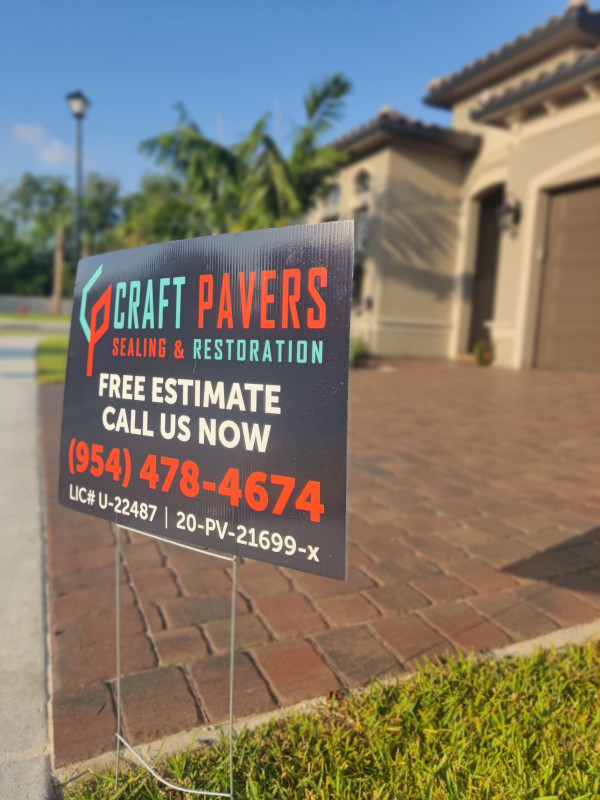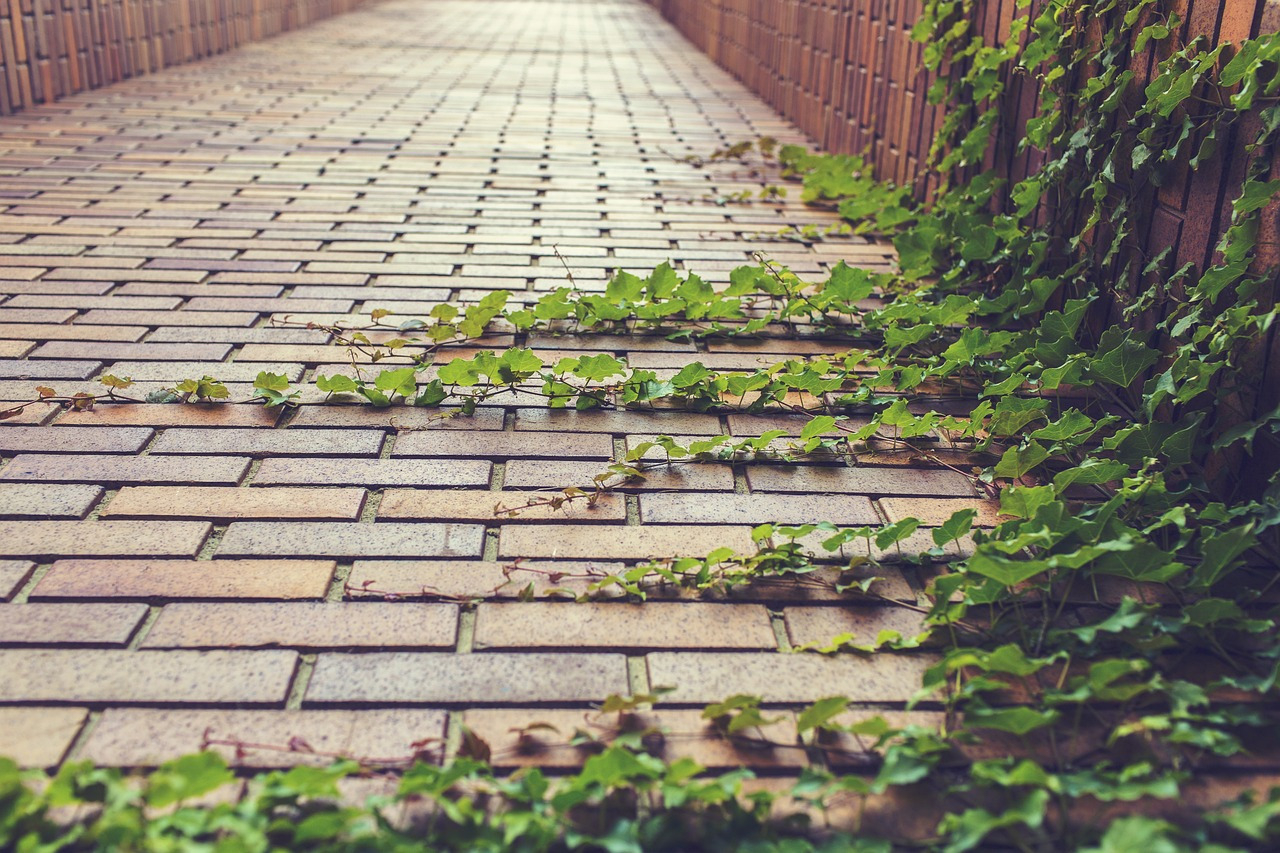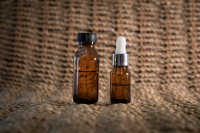What Are Pavers and Why Seal Them?
Concrete pavers are popular choices for creating outdoor living spaces such as patios, driveways, walkways, and decks. These paving stones are porous and can easily absorb stains from spills, as well as be prone to the growth of mildew. To protect the paver surface and maintain its paver color, it is essential to seal the pavers. By applying a sealer, you can prevent water penetration, and UV rays damage, and keep your pavers looking great for longer periods.
Before paver sealing, it is important to ensure that the pavers are clean and free from any debris. A paver cleaner, along with a scrub brush or pressure washer, can be used to clean the paver surface thoroughly. After the pavers are dry and ready to seal, a water-based or solvent-based sealer can be applied using a sprayer or broom. The sealing process usually hardens the joint sand between the pavers, creating a more stable surface.
It is recommended to reapply a sealer every 3-5 years to ensure that the pavers stay protected and maintain their gloss or wet look. This will also help prevent the paver joints from shifting and keep the paver sand in place. By sealing your pavers, you can extend the life of your outdoor living spaces and keep them looking their best.
Understanding Pavers and Their Benefits
When it comes to patio pavers or pool decks, it is essential to understand the importance of cleaning and sealing them. Pavers are a popular choice for hardscapes due to their durability and aesthetic appeal. Before sealing concrete pavers, it is crucial to clean the surface of the pavers thoroughly. This involves removing any debris, weeds, or stains that may be present. Once the pavers are clean, you can apply a water-based sealer or solvent-based sealer using a dry roller. It is important to note that solvent-based sealants evaporate faster, so they are better suited for lower temperatures. After sealing, it is recommended to wait about 24 hours for the pavers to dry completely. With proper maintenance, pavers can maintain their natural look for years to come.
Importance of Sealing Your Pavers
Sealing your pavers is an important step in maintaining the integrity and appearance of your outdoor spaces. Whether you have a paver patio, walkway, or driveway, sealing your pavers can help protect them from the elements and keep them looking like new for years to come. When sealing your pavers, it is essential to clean them thoroughly before sealing to ensure that dirt and debris are not sealed in. You can use a stiff broom or a leaf blower to remove any dirt or debris from the surface of your pavers. Once your pavers are clean, you can begin the sealing process.
Types of Paver Sealers
When it comes to cleaning and sealing pavers, there are various types of sealers to choose from. Before applying any sealer, it is important to thoroughly clean your pavers. Sweep and wash the pavers before sealing to ensure the best results. After cleaning and sealing pavers, many people opt to use a polymeric sand joint stabilizing sealer to help prevent weed growth and seal in the sand between the pavers. These types of sealers work well for paver installation in areas prone to weed growth or where the pavers may shift over time.

To seal my pavers, I like to use a breathable sealer that allows moisture to escape, preventing any potential damage from trapped moisture. This type of sealer is especially important for natural stone pavers, as it can help prevent discoloration and efflorescence. When choosing a sealer to use, it is important to follow the manufacturer’s sealer instructions for the best results. Some sealers may have a strong chemical odor, so it is important to apply them in well-ventilated areas. Generally, sealers may need to be reapplied every three to five years, depending on the climate and wear and tear on the pavers.
Exploring Different Sealer Options
Exploring Different Sealer Options can be a crucial step in maintaining the look and longevity of your paver. Before applying any sealer, it is important to have your pavers clean and dry. If you have recently installed pavers or have a small area to seal, you can typically apply the seal in a few hours and let the pavers dry. It is important to choose a sealer that will not only protect your pavers but also enhance their color and finish. Sealing can be likened to painting, where lower temperatures are better for application. Use a dry roller to soak up any excess sealer and watch out for drip marks. In sunny climates, a temperature of around 75 degrees is ideal for sealing, as it allows the sealer to dry without losing track. Always test the sealer on a small patio before going to seal your entire paved area and be sure to wear a respirator during application to avoid inhaling any fumes.
Choosing the Right Sealer for Your Pavers
Choosing the right sealer for your pavers is an important decision when it comes to protecting and enhancing the look of your outdoor space. There are different types of sealers available on the market, so it’s important to do your research and choose the one that best suits your needs. Acrylic sealers are popular for their durability and ability to enhance the color of your pavers, almost like paint. They also make cleanup of spills easier and can protect your pavers from stains and fading. Some sealers are even designed to repel water and oil, making maintenance a breeze.
Before applying a sealer, make sure your paver’s surface is clean and dry. Any dirt or debris left on the surface can seal dirt in, leaving unsightly marks on your beautiful pavers. Use a pressure washer or gentle detergent to clean the surface thoroughly. Once the surface is clean, you can apply the sealer using a nap roller for a smooth and even finish. Remember to follow the manufacturer’s instructions for best results.
How to Seal Your Pavers Step-by-Step
Preparing Your Pavers for Sealing
Before sealing your pavers, it is crucial to properly prepare them to ensure a smooth and long-lasting finish. One of the most important steps is cleaning the surface thoroughly to remove any dirt, debris, or stains. Without cleaning the pavers beforehand, the sealer may not adhere properly and could result in a patchy or peeling finish. Use a pressure washer or a cleaning solution to remove any built-up grime and allow the pavers to dry completely before applying the sealer.
Once the pavers are clean and dry, inspect the surface for any cracks or damage that may need to be repaired before sealing. Fill in any gaps with sand or a suitable filler to ensure a smooth and even surface. It is also recommended to apply a primer or base coat before adding the final sealant to improve adhesion and longevity.
Application Techniques for a Smooth Finish
When it comes to achieving a smooth finish on your application, using the right techniques is key. Preparation is essential before beginning any application. Make sure the surface is clean, dry, and free of any defects that could affect the finish. Next, choose the right tools for the job. Whether you are using a brush, roller, or sprayer, selecting the appropriate tool will make a big difference in the final result. Apply the product evenly and smoothly, working in small sections to avoid overlapping and visible brush strokes. Finally, allow proper drying time between coats to ensure a flawless finish. With the right techniques and attention to detail, you can achieve a smooth and professional-looking result on your application.
Tips for Maintaining Sealed Pavers
Sealed pavers can greatly enhance the appearance and longevity of your outdoor space. To ensure they stay in top condition, follow these maintenance tips:
Regular Cleaning: It's important to regularly sweep or hose down your sealed pavers to remove debris and prevent stains from forming.
Reapply Sealer: Over time, the sealant on your pavers may wear off. Reapply sealer every 2-3 years to ensure maximum protection against the elements.
Address Stains Promptly: If you notice any grease, oil, or other stains on your pavers, address them promptly using a degreaser or stain remover specifically designed for pavers.
Prevent Weed Growth: To prevent weeds from growing between your sealed pavers, use a polymeric sand or joint stabilizing sealer to fill in the gaps and discourage weed growth.






